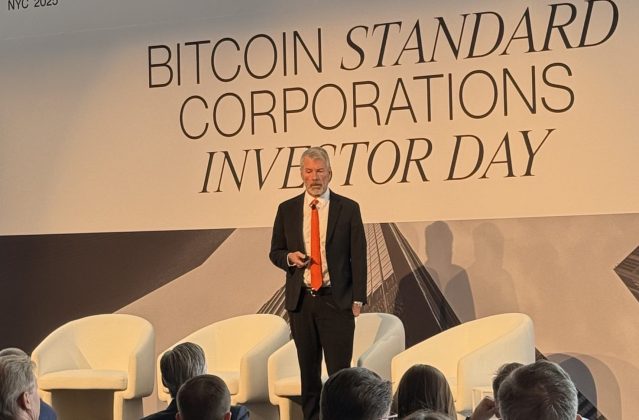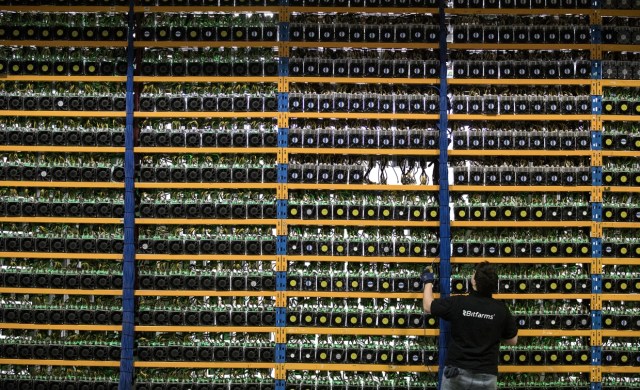
Bitcoin Classic, an attempt to implement an alternative version of the Bitcoin protocol with a higher block size limit, has been one of the biggest stories in the blockchain space over the past few months, and one of the key areas of debate over this new software client has to do with the 75 percent network hashrate activation threshold for a potential hard fork.
Many contributors to Bitcoin Core think the 75 percent number chosen by the Bitcoin Classic team is too low, but the reality is that the hard fork is likely to activate at a level of support more than three percentage points lower.
Bitcoin XT Background
Neighborhood Pool Watch is a popular Bitcoin mining blog operated by blockchain researcher Andrew Geyl. In August, Geyl made a post regarding some potential flaws in BIP 101, which was the block size increase proposal implemented by Bitcoin XT. One of the flaws pointed out by Geyl was that there was no expiration date on voting for Bitcoin XT in coinbase transactions. This means, theoretically, voting could continue forever.
In both Bitcoin XT and Bitcoin Classic, the real method of hard fork activation is a count of miner votes from the last 1,000 blocks. If 750 of the last 1,000 blocks are found by miners who support the new, alternative protocol, then the hard fork is activated (although it doesn’t actually take place until after a grace period). The problem here -- at least in terms of gauging miner support -- is that miners can get lucky and find more blocks than their actual share of the network would predict over the short term.
As an example of this issue in his post from August, Geyl noted:
“After a couple of years (if voting continued for so long) it's conceivable that a true proportion of just over two-thirds could activate BIP 101.”
Real Activation Threshold for Bitcoin Classic
The good news is that Bitcoin Classic has introduced an expiration date for its hard fork plans. If the hard fork to a 2-megabyte block size limit is not activated by January 1, 2018, then it is deemed a failure.
Bitcoin Magazine reached out to Andrew Geyl to get his thoughts on the probability of a hard fork activation below Classic’s intended 75 percent threshold, and he stated:
“I estimate at most a 27 percent chance of activating with a true proportion of 70 percent of the network, but only after 100,000 blocks at that proportion, which would mean remaining at 70 percent for about two years. More realistically, the ‘yes’ voter proportion could stall for a few months, say 10,000 to 20,000 blocks, and in this case there's a 3 to 6 percent change of activating at 70 percent.”
Geyl also shared his thoughts on the level of support required for a hard fork to become likely:
“I think a true proportion of ‘yes’ voters at 70.5 percent to 71 percent of the network could activate Bitcoin classic early with 50 percent probability.”
It’s important to note the January 1, 2018 deadline isn’t exactly set in stone. One has to wonder if supporters of the increased block size limit would simply roll over and give up if the 75 percent threshold is not met by that point in time. Although the relative abandonment of the Bitcoin XT project could indicate that these sorts of miner votes die out if real support is not gathered in a timely manner.
A hard fork by Bitcoin Core has also become more likely over the past few weeks.
What Is an Acceptable Threshold?
Tangentially related to this issue of true hard fork activation thresholds is the issue of at what level of consensus or support from miners a hard fork should be activated. Bitcoin Core is sticking with the 95 percent threshold that has been used in the past, while others are convinced a 75 percent (or even 51 percent) threshold is fair game.
There are tradeoffs with any selected threshold. Ninety-five percent support requires near-universal consensus on a change, so development is likely to be slower. Seventy-five percent support would allow changes to Bitcoin’s consensus rules to happen much more rapidly, but it also opens the door to changes that aren’t universally agreed upon as good ideas.
The differing opinions on the required levels of support from the network hashrate to activate a hard fork are a great example of how the so-called block size debate is about much more than the block size limit.










